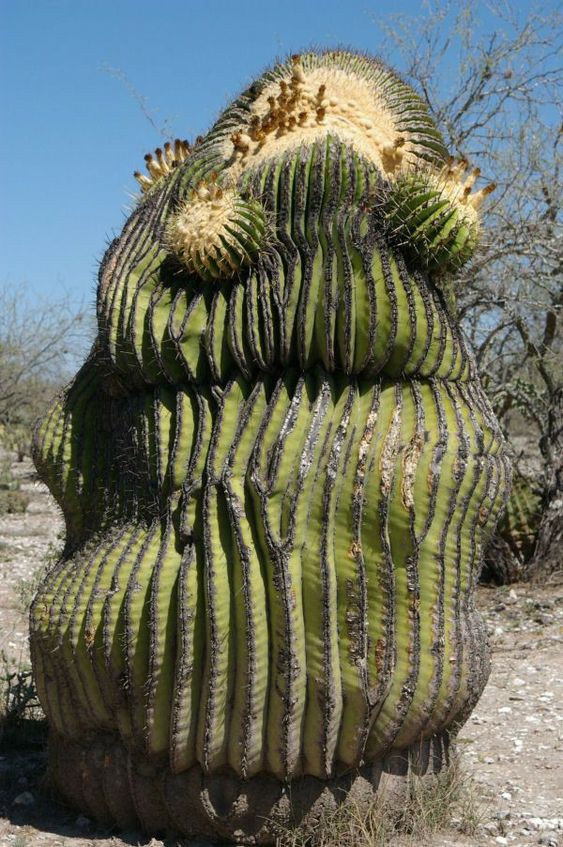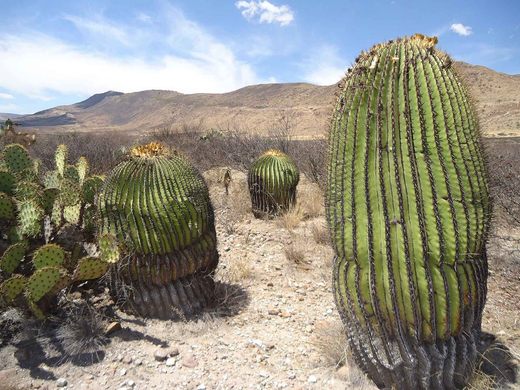Unveiling Nature’s Majestic Endurance: The 200-Year Journey of a Giant Saguaro

In the vast and arid landscapes of the American Southwest, among the rugged terrains of the Sonoran Desert, stands the iconic giant saguaro cactus (Carnegiea gigantea), a symbol of resilience and endurance. The saguaro’s journey spans over two centuries, a testament to its remarkable adaptation to harsh desert conditions. With its towering stature, reaching heights of up to 40 feet or more, and its distinctive silhouette adorned with upward-reaching arms, the saguaro commands attention and reverence from all who encounter it. But beyond its outward appearance lies a story of survival against the odds, a narrative of resilience shaped by the unforgiving desert environment.

Born from tiny seeds, each no larger than a pinpoint, the saguaro begins its life journey in the shelter of nurse plants, such as the palo verde or mesquite, providing protection and vital nutrients during its vulnerable early years. Slowly but steadily, the saguaro grows, its roots delving deep into the parched earth in search of water, while its ribbed, waxy skin serves as a shield against the scorching desert sun. Despite facing myriad challenges, from drought and wildfire to predation by desert animals, the saguaro perseveres, its longevity a testament to its ability to adapt and thrive in one of the harshest environments on Earth.

As the saguaro matures, it becomes a vital component of the desert ecosystem, providing shelter, food, and nesting sites for a diverse array of wildlife. Birds, such as Gila woodpeckers and Gilded flickers, excavate nest cavities in the saguaro’s trunk, while bats and other nocturnal creatures seek refuge within its hollowed-out arms. During the scorching summer months, the saguaro’s succulent fruits provide a vital source of moisture for desert-dwelling animals, from bighorn sheep to javelinas and desert tortoises.

But perhaps most astonishing of all is the saguaro’s ability to withstand the test of time, surviving for centuries in an environment where few plants dare to tread. Some individuals have been known to live for more than 200 years, their gnarled and weathered trunks bearing witness to the passage of time and the ever-changing landscape of the desert. Each saguaro tells a story, its growth rings serving as a chronicle of years gone by, recording periods of abundance and scarcity, of growth and dormancy, of life and death.

In a world where the pace of change seems to accelerate with each passing day, the saguaro stands as a timeless symbol of endurance, a reminder of nature’s capacity for resilience in the face of adversity. Its stoic presence serves as a source of inspiration for all who encounter it, reminding us of the importance of perseverance, adaptation, and the enduring power of life in even the most inhospitable of environments. Truly, the 200-year journey of the giant saguaro is a testament to the majesty and resilience of the natural world.

